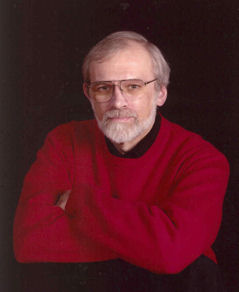Yesterday we got some interesting information from Smart Growth America (SGA) and the Natural Resources Defense Council (NRDC) about how each the fifty states is preparing for "smart growth" and greenhouse gas reduction.
Before opening it, my very first question was, How badly did Michigan do? The answer - when I finally found it - was, Better than I thought!
The report, titled "Getting Back On Track: Aligning State Transportation Policy with Climate Change Goals," used lots of publicly available data sources to rate each state in several categories. One key point is that transportation decisions are made mainly at the state level. The Federal government can offer incentives and cash, but the states have the final say as to what they're going to do. Several good examples came up in the last few of months, as governors and governors-elect of New Jersey, Ohio, and Wisconsin threatened or vetoed federal transportation funding because it was tied to rail projects which, for whatever reason, were considered a waste of funds. Even powerful, local governments are stopped by their states, as in the case of New York City's 2007 congestion mitigation plan which the state legislature killed simply by blocking it from coming to a floor vote.
"Getting Back On Track" looks at three main types of criteria: Infrastructure Policies, Transportation Investment Decisions, and Touchstone Policies. The last refers to general state policies that impact - directly or indirectly - the reduction of greenhouse gas emissions from transportation sources. A point score in each category, based on multiple indicators, gives a sort of "percentage grade" for each state. States were then ranked in each category to see how they compare. Here's how Michigan scored in each category:
| Infrastructure Policy | Transportation Investment Decisions | Touchstone Policies | |
|---|---|---|---|
| Michigan's Rank | 26 | 9 | 17 |
| Michigan's Score | 36% | 51% | 5 of 15 points |
Our infrastructure policy seems to rank about average, but we ranked better in "touchstone" policies, and pretty well in actual investment decisions. That's good if we're being graded "on the curve". If you look at our actual scores, we're flunking in all categories. I don't suppose the laws of physics "grade on the curve", so when greenhouse gas emissions take effect in the environment, it's the score that counts - not the rank.
The scores from each category were combined to calculate an overall score for each state. Here are a few states that might be of interest to us in Michigan:
| State | Rank | Score | Notes |
|---|---|---|---|
| California | 1 | 80% | California tops the list. Interesting that the state which began the "freeway life style" is also the first to react to its limitations. |
| Minnesota | 10 | 59% | Best in the Midwest |
| Illinois | 13 | 53% | Second among near neighbors |
| Wisconsin | 14 | 51% | Third in the Midwest |
| Michigan | 17 | 48% | Fourth in the Midwest |
| Ohio | 34 | 28% | Surprisingly low given its relatively high population and industrial base |
| Indiana | 45 | 20% | Last in the Midwest, but it ranks with other states whose population density is low |
| Arkansas | 50 | 2% | Arkansas may be HQ for the tops among the world's retailers, but it's dead last in green transportation. |
The top states on the list are all coastal states with large, densely-populated areas: California, Maryland, New Jersey, Connecticut, Washington, Oregon, Massachusetts, and Rhode Island. The states at the bottom are all rural, low-density areas: Montana (41st on the list), followed by Alabama, South Dakota, Wyoming, Indiana, Nebraska, North Dakota, West Virginia, Mississippi, and of course Arkansas in last place.
One way to look at this distribution is to speculate that high-ranking states have congestion problems that can't be ignored - but also, they have more abundant resources to deal with their whatever problems. So why is New York number 21? On the other hand, states at the bottom of the list have scantier resources to solve whatever problems they do have. Alabama, Indiana, and Nebraska each has at least one large metropolitan area which undoubtedly suffers from some degree of congestion and pollution.
Michigan falls somewhere in the middle, and of course we have our unique issues. We have areas of density, but there is a sense that we lack the economic resources to deal with the congestion and pollution. Then there's the fact that Michigan - and especially Detroit, its densest and most congested area - is losing population. Some people have the attitude that if we just wait long enough, Detroit will go away. That's a non-starter, for sure!
What next?
Because states have such an important role in setting transportation policy and practice, I'm going to pass along the study's recommendations for state action. Which of these are we already doing well in Michigan...and which can we do better?
- Balance state transportation investments by:
- using state and federal resources to support robust public transportation service
- prioritize highway repair and safety over new capacity
- support non-motorized transportation, and
- ensure state fuel taxes can support all transportation modes.
-
- Manage traffic through congestion pricing tools and incentivize low-carbon transportation options through comprehensive commuter programs.
- Link transportation and land use in transportation plans, implement smart growth and growth management policies, and promote transit oriented development.
- Set a course to reduce emissions by setting per capita transportation greenhouse gas or vehicle-miles traveled reduction targets.
What do you think? Which areas do we need to improve on, and how?
Get the full report here.


































